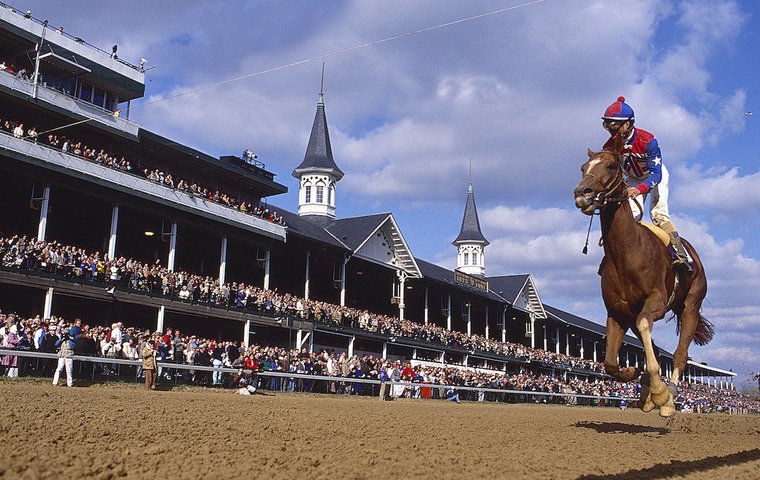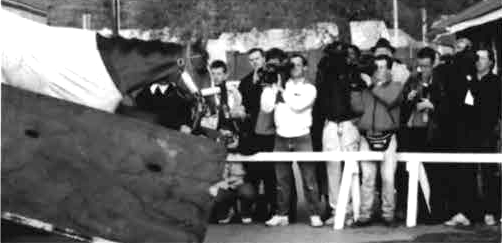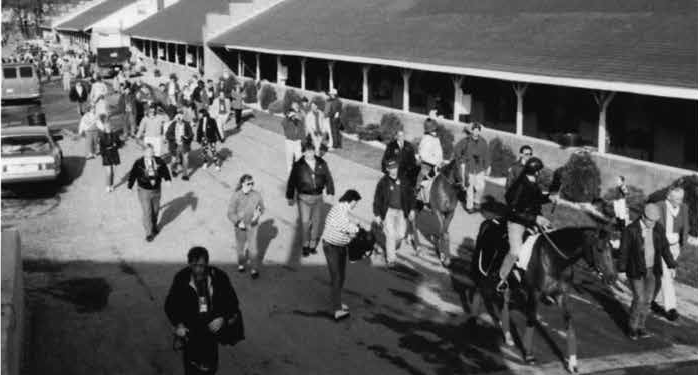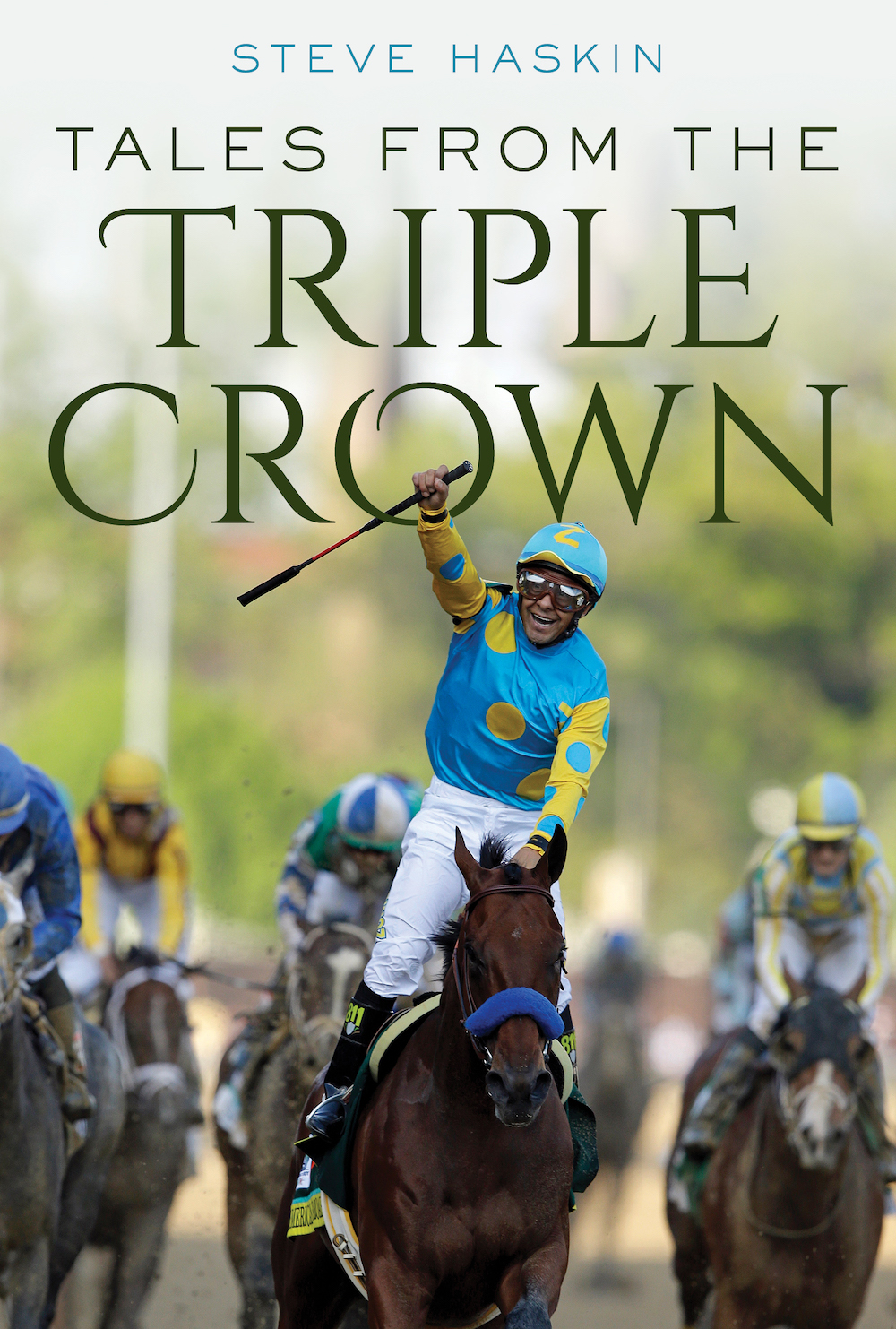
In this extract from his book Tales From the Triple Crown, award-winning writer Steve Haskin recalls the extraordinary brouhaha accompanying the French colt’s arrival in Louisville in May 1992 – six months after he had set the racing world alight in the Breeders’ Cup Juvenile
My first Kentucky Derby writing assignment for the Daily Racing Form was collaborating with my colleague Ed Fountaine on a daily ‘Derby Patrol’ column in 1992, for which we would report on and analyze all Derby works at Churchill Downs.
Although we witnessed the majority of the Derby horses going through their final drills that year, it was all a prelude to the event racing fans and members of the media in America and Europe were anxiously anticipating – the return of undefeated French superstar Arazi, whose electrifying run in the previous fall’s Breeders’ Cup Juvenile was still being talked about five months later.
Arazi had blown by the entire field, going from thirteenth to first with one of the most explosive bursts of speed ever witnessed in this country. His powerful move brought accolades even from European horsemen.
Trainer John Hammond, who had won the Prix de l’Arc de Triomphe with Suave Dancer, said, “I’ve never seen anything like it. I have to admit I was a doubter before the race, but this horse must have some incredible engine.”
Said Geoffrey Gibbs, senior handicapper for the British Jockey Club, “That was the best two-year-old performance I have seen and am ever likely to see. I have never witnessed such acceleration.”
Alex Scott, who had saddled Sheikh Albadou to win the Breeders’ Cup Sprint earlier in the day, said, “If we had seen that on our racing soap opera Trainer, we’d say it was ridiculous; that sort of thing just doesn’t happen. But it did happen. It was like something out of National Velvet.”
Not only was my colleague Ed one of many on the Arazi bandwagon, he was standing up and leading the charge. One night after dinner he drove to the makeshift quarantine facility that had been set up for Arazi across the street from Churchill’s main gate.
“Just think, that’s where Arazi is going to be in a couple of days,” he said, sounding as if he were awaiting Elvis.
“You have to stop being so starstruck,” I told him.
The fact is I felt Arazi had no chance in the Derby although I wanted him to win as much as anyone else, knowing the history he would make by becoming the first foreign-trained horse to win the Run for the Roses. Prior to Arazi’s Breeders’ Cup victory, owner Allen Paulson had sold half-interest in Arazi to Sheikh Mohammed for a reported $9 million. Shortly afterward the colt underwent knee surgery to remove bone chips, a procedure his trainer Francois Boutin felt was unnecessary.
Prior to Arazi’s three-year-old debut, the one-mile Prix Omnium at Saint-Cloud, Boutin told England’s monthly video Racing World that Arazi’s knees were more problematic after the surgery than before.
Excerpts of his interview were published in the Racing Post. “Personally, I don’t think Arazi’s knees are any better now than they were before,” he said. “If anything, they are more of a problem now. Before, he had perfectly good knees, but since the operation, he has been feeling the effects. One minute they are hot and the next minute they are cold.”
After his quotes were published, Boutin attempted damage control, stating he had been misinterpreted. But the interviewer, Jocelyn de Moubray, insisted there had been no misinterpretation. He did defend Boutin by saying the trainer had been in a “nervous state” as Arazi’s debut grew nearer and pointed out that the interview had been conducted several weeks earlier.
Arazi won the Prix Omnium with ridiculous ease, barely raising a sweat, and would have to go into the Derby off only one prep. The last horse to win the Run for the Roses with less than two starts as a three-year old was Morvich in 1922. In addition to having little racing foundation, he had never been farther than a mile-and-a-sixteenth and was now stretching out to a mile-and-a-quarter.
When you added everything up and looked beyond all the hype and glamour that surrounded the horse, there was no way Arazi would go on to win the Derby – unless, of course, he was some kind of freak who could defy all logic and reasoning.
Prior to Arazi’s arrival at Churchill Downs, most of the focus was on Santa Anita Derby winner A.P. Indy, trained by Neil Drysdale for Japanese owner Tomonori Tsurumaki, and Casual Lies, the Cinderella horse owned and trained by the unknown and witty Shelley Riley, from the Northern California fair circuit.
Arazi was scheduled to arrive in Louisville on the Sunday afternoon before the Derby. Everyone was well aware that once he had arrived and cleared quarantine, bedlam would rule at his barn and on the racetrack whenever he appeared.
I had arranged with Bob Bailey, head of Churchill Downs security, to shadow him all day and record all the events leading up to and including Arazi’s arrival.
On a cold, blustery afternoon, with biting winds that made it feel even colder, Arazi was scheduled to arrive at Butler Field in Louisville at two o’clock. All of Louisville was abuzz waiting for the much-anticipated arrival of the French wonder horse.
At 1:30 Bailey looked out his office window toward the old J.J. Carter moving and storage building, which would serve as Arazi’s quarantine facility. He called stall superintendent Mike Hargrove to check on Arazi’s whereabouts and was informed plane was on time. Bailey would be responsible for Arazi once the colt arrived at Churchill Downs, and the waiting made him all the more anxious.
Fifteen minutes later Bailey began getting antsy and tried to contact Louisville police officer Boone Pike, who was in charge of coordinating traffic and blocking off nearby Rodman Avenue. There was still no word on Arazi.
Bailey, attempting to keep himself occupied, called Lieutenant Don Burbrink and Officer Tom Coin of the Louisville Police Department, who were on special assignment for Churchill Downs. Bailey went over last-minute instructions with them on how the barricades would be set up.
With that taken care of, Bailey called out to his associate Ron Gnagie in the next room. “What are we forgetting, Ron?” he asked. “I’m sure we’re forgetting to do something. I’ve been going over and over everything in my mind.”
 At 2:40 Bailey learned that the plane had landed but the van hadn’t yet left the airport “Let’s get that horse here already,” he said to no one in particular.
At 2:40 Bailey learned that the plane had landed but the van hadn’t yet left the airport “Let’s get that horse here already,” he said to no one in particular.
At three o’clock the phone rang. Bailey quickly picked it up and said nothing. After hanging up, he called out to the main communications room: “Call dispatch. Tell Boone they’re on their way.” He then grabbed his coat and headed across the street.
A crowd had begun to form outside the J.J. Carter building. Some 70 chilled-to-the-bone reporters and photographers, many dressed in heavy coats and sweaters, paced back and forth, trying to keep warm. Among them was Ed, equipped with his disposable camera, ready to record the historic moment.
Two uniformed Murray guards from the private security firm hired by Churchill Downs guarded the building’s entrance. Soon, the crowd swelled to well over a hundred. People driving down Central Avenue looked quizzically at this unusual gathering.
Bailey stood by the curb, peering up the street. He then received word that the van had just exited the Waterson Expressway. At 3:35 Bailey announced what everyone had been waiting hours to hear: “They’re here.”
Finally, the van was in sight. It stopped outside the quarantine facility, and as the doors slid open, there, staring down at the large crowd, was the one and only Arazi.
He quickly was led off the van, as security officers and Churchill employees kept everyone at bay. Just like that it was over. Arazi was tucked away in his new home for the next 24 to 36 hours. One of the wildest and wackiest Derby weeks had begun.
As hectic as Arazi’s arrival had been, it couldn’t compare to his first visit to the track. No horse in memory had ever made such an entrance. Hordes of people followed him from the barn to the track. You couldn’t get near the rail, which was lined four and five deep.
Wherever Arazi went, the crowds followed, whether he was headed to the track or being bathed outside his barn.
Neil Drysdale remained quietly confident, and it didn’t bother him in the slightest that A.P. Indy was being ignored. Unlike the smallish, compact Arazi, A.P. Indy was a powerfully made colt who looked like he’d run all day.
As I made my way back from the track following Arazi’s grand entrance, I passed Drysdale’s office and told him he had missed all the excitement. “Oh, I missed it?” he said with a straight face. “I was too busy doing the crossword puzzle.”
• A.P. Indy was made second favorite on the morning line for the 1992 Kentucky Derby, only to be scratched on the morning of the race owing to a bone bruise. A near-invisible crack was found in his hoof, and he missed the Preakness before winning that year’s Belmont Stakes and Breeders’ Cup Classic.
Odds-on favorite Arazi did make the starting gate, where he was drawn wide in gate 17 of an 18-runner field. He tired in the stretch to finish a disappointing eighth behind 18-1 shot Lil E. Tee. Arazi was never the same horse again.
 Tales from the Triple Crown by Steve Haskin is published on November 1 in paperback (278pp, revised and updated) by Eclipse Press; pre-order for $21.95 at the publisher’s website or via Amazon
Tales from the Triple Crown by Steve Haskin is published on November 1 in paperback (278pp, revised and updated) by Eclipse Press; pre-order for $21.95 at the publisher’s website or via Amazon
• Visit the Breeders’ Cup website and the Kentucky Derby website
Jay Hovdey’s Favorite Racehorses: Mizdirection – ‘She was one of a kind, a pleasure to be around’
View the latest TRC Global Rankings for horses / jockeys / trainers / sires


